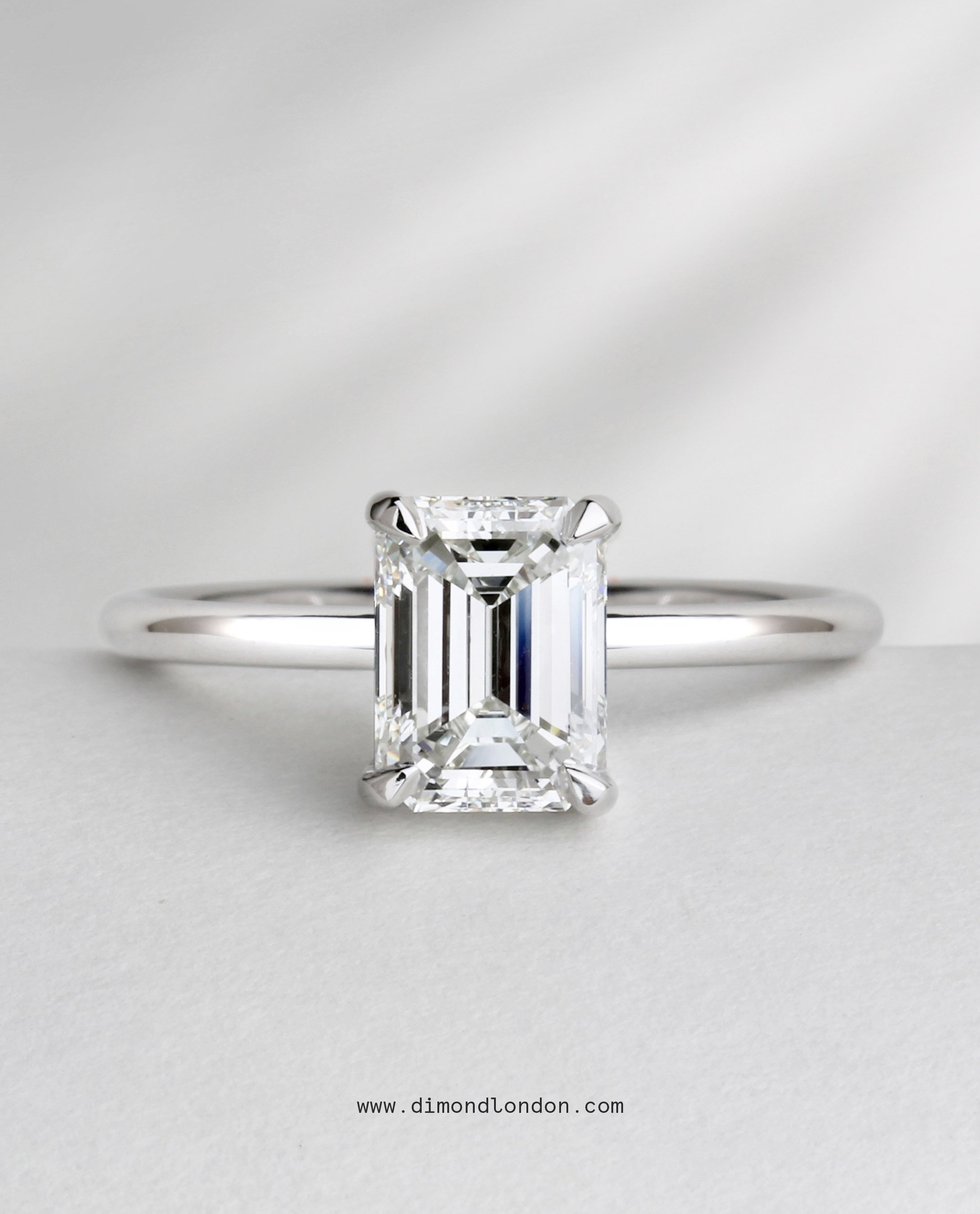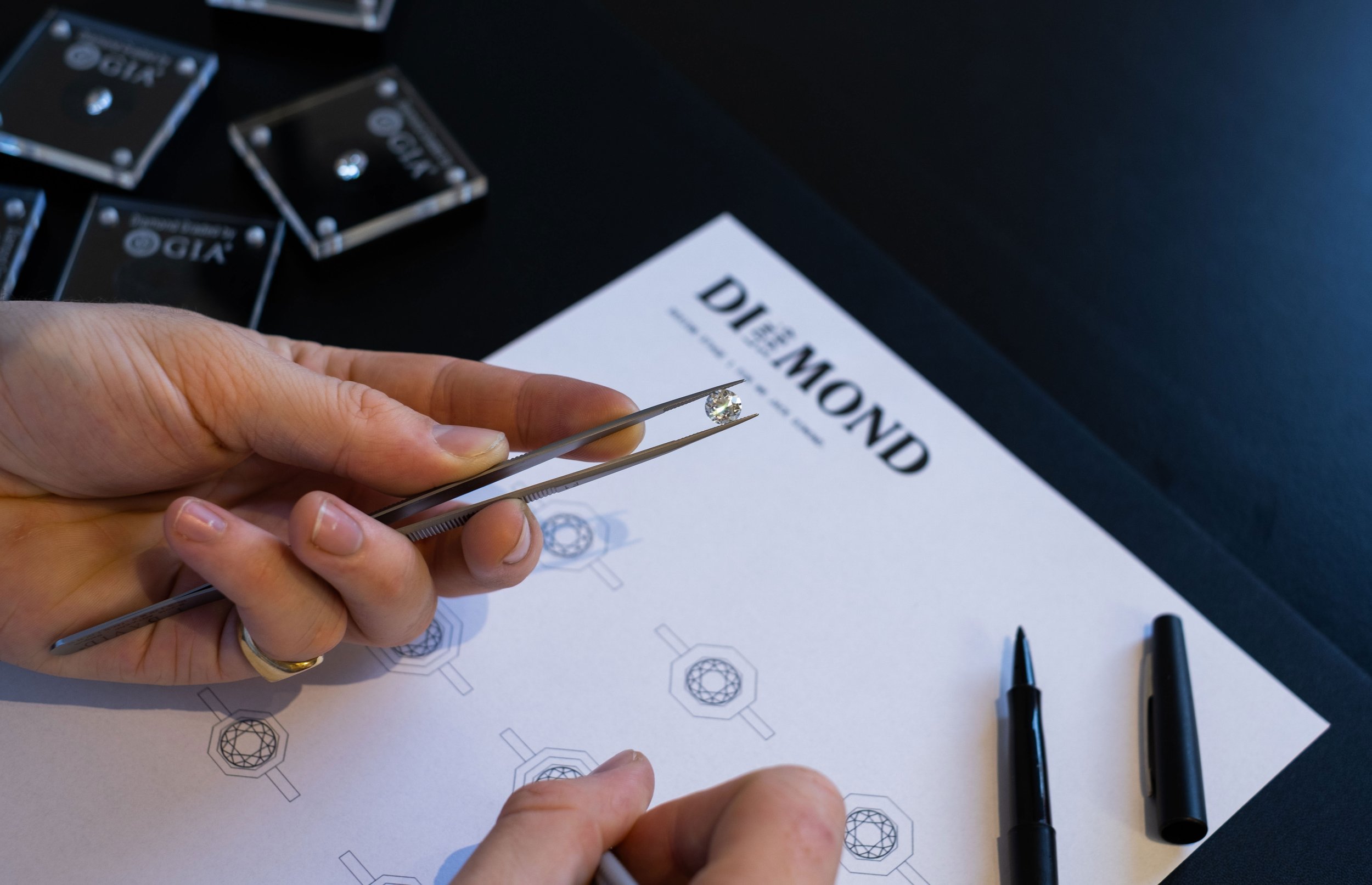AN EXPERT’S GUIDE TO NATURAL DIAMONDS
As genuine diamond experts with over 60 years of experience spanning three generations, we have an unparalleled understanding of these gemstones. Our expertise allows us to appreciate the intricate journey each diamond undertakes, from its formation to its development as a polished stone ready for fine jewellery design.
We recognise that there’s a finite supply of natural diamonds – they’re rare and formed from pure carbon crystallised under pressure and heat deep within the earth's mantle over millions to billions of years. When we refer to ‘diamonds’, we specifically mean these natural formations.
Types of natural diamonds
Colourless diamonds, often referred to as white diamonds are highly coveted for their timeless appeal, particularly in engagement rings and fine jewellery. On the other hand, fancy coloured diamonds offer a fascinating spectrum of hues, ranging from delicate pastels to bold saturations. Coloured diamonds get their colour from trace elements or structural anomalies during their formation, resulting in various shades of pink, blue, yellow, and more.
Characteristics of natural diamonds
Natural diamonds undergo evaluation based on the 4Cs: cut, colour, clarity, and carat weight. These criteria serve as universal standards for assessing both the quality and value of diamonds. The higher a stone's score in each category, the greater its value.
Identifying natural diamonds
Gemologists utilise a range of techniques to identify natural diamonds, employing specialised equipment and conducting visual inspections. These methods include thermal conductivity and refractive index measurements, which are instrumental in distinguishing diamonds from other gemstones. As trained professionals, we also use loupe magnification and fluorescence tests to further evaluate a diamond's authenticity and quality.
‘Natural diamonds’ vs ‘mined diamonds’
Referring to diamonds as ‘mined’ can be misleading, as not all natural diamonds undergo mining processes. Some natural diamonds remain inaccessible, beyond the reach of modern technology, while others are brought to the surface by natural forces and retrieved without traditional mining methods.
Purchasing an ethical diamond
Our diamonds adhere to the UN-mandated Kimberley Process, a globally recognised certification ensuring diamonds are sourced from legitimate origins. Additionally, all our stones above 0.30 carats are GIA certified, providing further assurance of quality and authenticity.
With years of experience in the diamond trade, we meticulously select our suppliers to offer our customers the highest-quality diamonds available worldwide.
Heirloom diamonds
Investing in a natural diamond now, particularly as the supply is expected to decline significantly in the next three decades, ensures you're investing in an asset that will appreciate in both sentimental and financial value. Natural diamonds maintain their worth over time, with heirloom diamonds often referred to as the pinnacle of sustainability as they are recycled and cherished across generations.
Polished diamonds
Polished diamonds undergo a remarkable transformation not only in appearance but also in value along the supply chain. In 2021, the global sales value of rough diamonds reached approximately $16.4 billion. However, after the polishing process, their value nearly doubled, reaching $28 billion.
Industrial diamonds
Renowned for their extreme hardness, diamonds are prized materials for cutting and grinding tools. Approximately half of all mined diamonds do not meet gemstone standards and find utility in various industrial applications.
With a flood of information and terminology to navigate, shopping for a diamond can be daunting. We aim to simplify the process by offering clear and concise information to empower your purchasing decisions when looking for a diamond.





